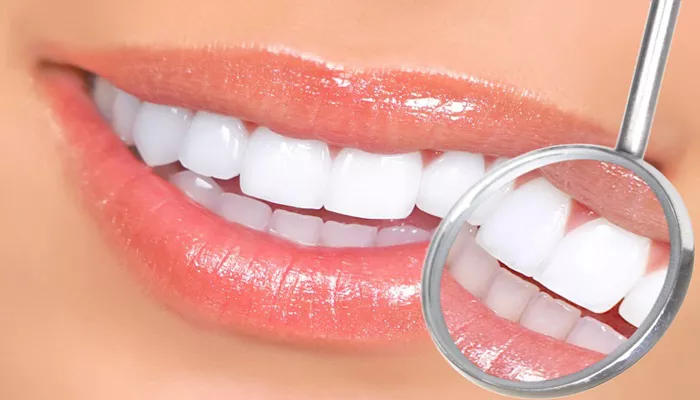Teeth whitening is a popular cosmetic dental procedure that aims to improve the appearance of teeth by making them whiter and brighter. Many people seek teeth whitening treatments to enhance their smiles and boost their confidence. This article will explore how it works, the different methods available, potential side effects, and tips for maintaining a bright smile.
Understanding Teeth Discoloration
Before diving into the details of teeth whitening, it is essential to understand why teeth become discolored. Several factors contribute to the staining and yellowing of teeth, including:
Food and Beverages: Certain foods and drinks, such as coffee, tea, red wine, and berries, can stain teeth over time. These items contain pigments that can adhere to the enamel.
Tobacco Use: Smoking or chewing tobacco can lead to significant discoloration. The tar and nicotine in tobacco products can stain teeth and cause them to appear yellow or brown.
Aging: As people age, the enamel on their teeth naturally wears down, revealing the yellowish dentin underneath. This process can lead to a duller smile.
Poor Oral Hygiene: Inadequate brushing and flossing can result in plaque buildup, leading to stains and discoloration.
Medications: Certain medications, such as tetracycline antibiotics, can cause discoloration if taken during childhood when teeth are still developing.
Genetics: Some individuals may have naturally darker teeth due to genetics. The thickness and translucency of enamel can vary from person to person.
SEE ALSO: How Much Does Teeth Whitening Cost in Florida?
How Teeth Whitening Works
Teeth whitening works by using bleaching agents to remove stains and lighten the color of the teeth. The most common active ingredient in whitening products is hydrogen peroxide or carbamide peroxide. Here’s how the process works:
Bleaching Agents: When applied to the teeth, hydrogen peroxide or carbamide peroxide breaks down into smaller molecules. These molecules penetrate the enamel and dentin, where they react with the stains.
Oxidation Process: The bleaching agents release oxygen molecules that interact with the stain molecules. This reaction breaks down the stains, making them less visible and resulting in a whiter appearance.
Enamel Preservation: Most professional whitening treatments are designed to preserve the enamel while effectively removing stains. However, it is essential to follow the instructions provided by dental professionals to avoid damaging the enamel.
Types of Teeth Whitening Methods
There are several methods available for teeth whitening, each with its advantages and disadvantages. The main types include:
1. In-Office Whitening
In-office whitening is a professional treatment performed by a dentist. This method offers immediate results and is often the most effective option. Here’s how it works:
Consultation: The dentist will evaluate your teeth and discuss your whitening goals. They may take before-and-after photos to track progress.
Preparation: The dentist will clean your teeth and apply a protective barrier to your gums to prevent irritation.
Application of Whitening Gel: A high-concentration whitening gel is applied to the teeth. The dentist may use a special light or laser to enhance the whitening process.
Duration: The treatment typically takes about 60 to 90 minutes, and results can be seen immediately.
Results: In-office whitening can lighten teeth by several shades in just one session.
2. At-Home Whitening Kits
At-home whitening kits are available through dental offices or over-the-counter. These kits typically contain lower concentrations of bleaching agents compared to in-office treatments. Here’s how they work:
Custom Trays: Dentists may provide custom-fitted trays that ensure even application of the whitening gel. Over-the-counter kits often come with one-size-fits-all trays.
Whitening Gel: The kit includes a whitening gel that contains hydrogen peroxide or carbamide peroxide. Users apply the gel to the trays and wear them for a specified amount of time.
Duration: At-home kits usually require daily use for a few days to a few weeks, depending on the desired results.
Results: While at-home kits can be effective, results may take longer to achieve compared to in-office treatments.
3. Whitening Toothpaste
Whitening toothpaste is an easy and convenient option for maintaining a bright smile. These products contain mild abrasives and chemical agents that help remove surface stains. Here’s what to know:
Abrasives: The toothpaste contains gentle abrasives that scrub away surface stains without damaging the enamel.
Chemical Agents: Some whitening toothpastes contain chemical agents that help break down stains.
Limitations: While whitening toothpaste can help maintain brightness, it may not provide dramatic results for deeper stains.
4. Whitening Strips
Whitening strips are thin, flexible plastic strips coated with a whitening gel. They are easy to use and can be purchased over-the-counter. Here’s how they work:
Application: Users apply the strips directly to the teeth and leave them on for a specified amount of time, usually 30 minutes.
Duration: Most whitening strip kits recommend daily use for about two weeks.
Results: Whitening strips can lighten teeth by a few shades, but results may vary based on the concentration of the whitening agent.
Potential Side Effects of Teeth Whitening
While teeth whitening is generally safe, some individuals may experience side effects. Here are some common side effects to be aware of:
Tooth Sensitivity: Some people may experience increased tooth sensitivity during or after whitening treatments. This sensitivity is usually temporary and subsides after a few days.
Gum Irritation: The bleaching agents can irritate the gums, especially if they come into contact with the soft tissues. This irritation typically resolves quickly.
Uneven Results: If teeth are not evenly stained, whitening treatments may result in uneven color. It is essential to consult a dentist for the best results.
Overuse: Overusing whitening products can lead to enamel erosion and increased sensitivity. It is crucial to follow the recommended guidelines and consult a dental professional.
Conclusion
Teeth whitening is an effective way to enhance your smile and boost your confidence. Understanding what teeth whitening does, how it works, and the different methods available can help you make informed decisions about your dental care. While the results can be impressive, it is essential to follow proper guidelines and consult a dental professional for the best outcomes.

